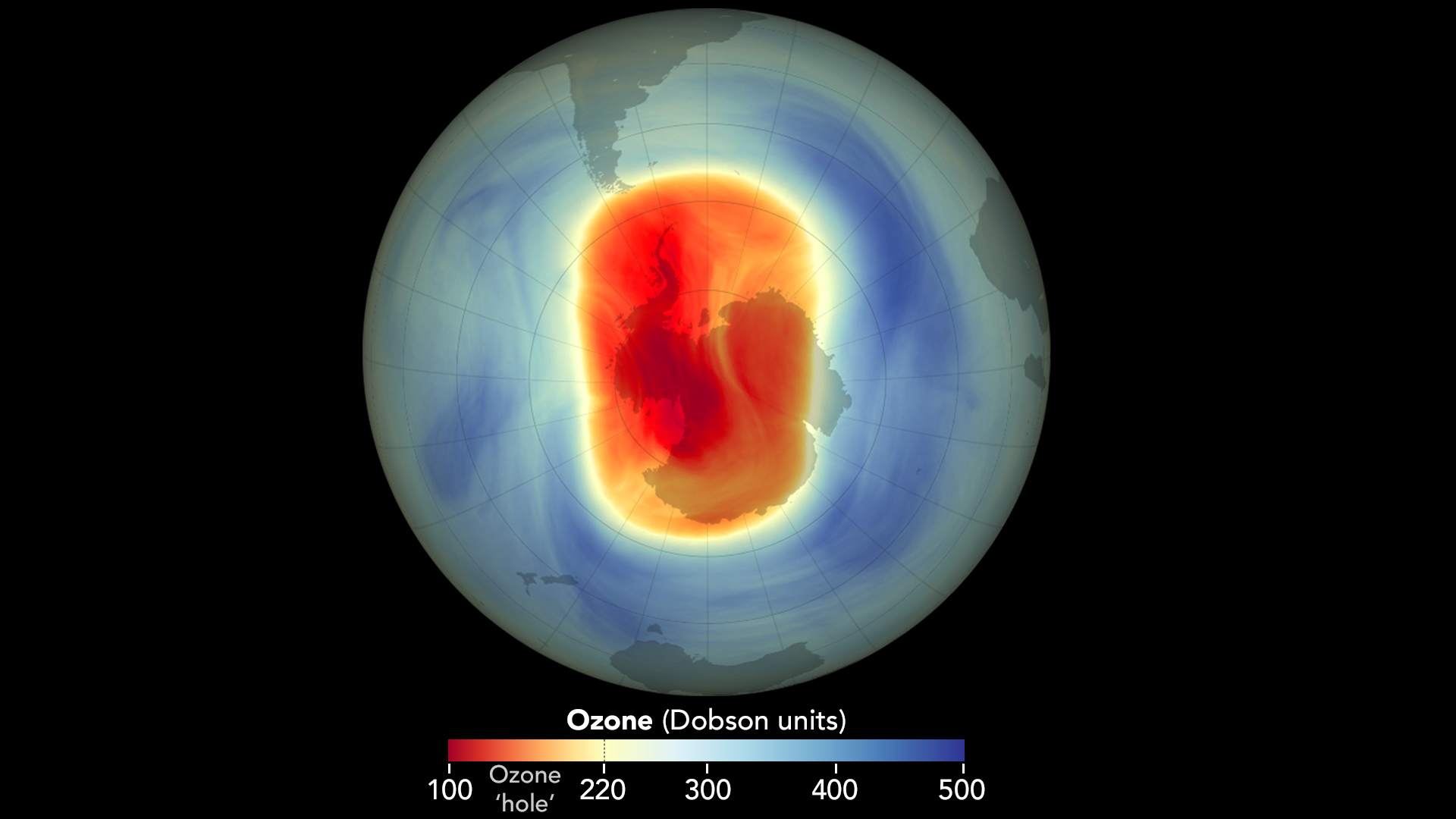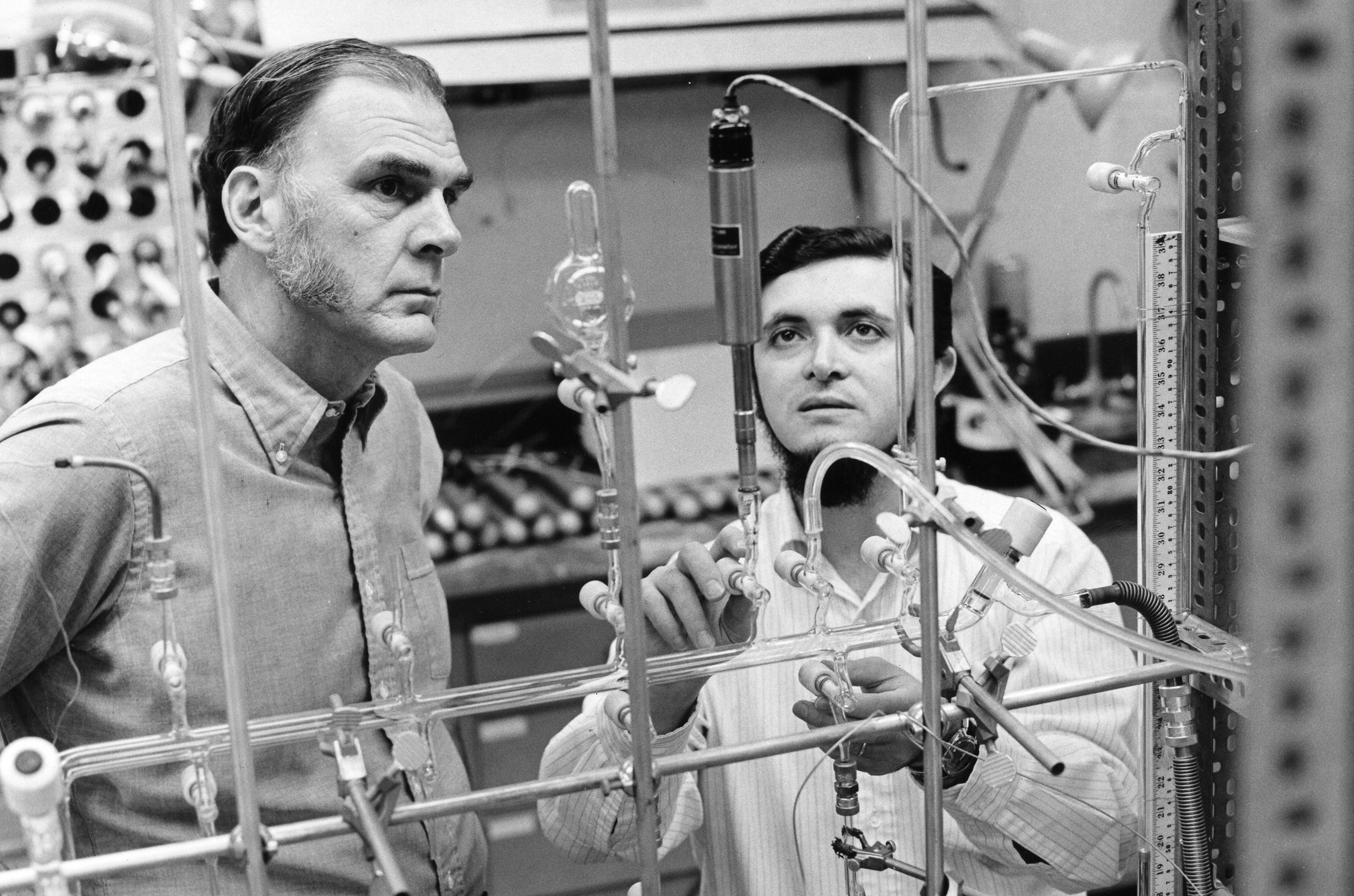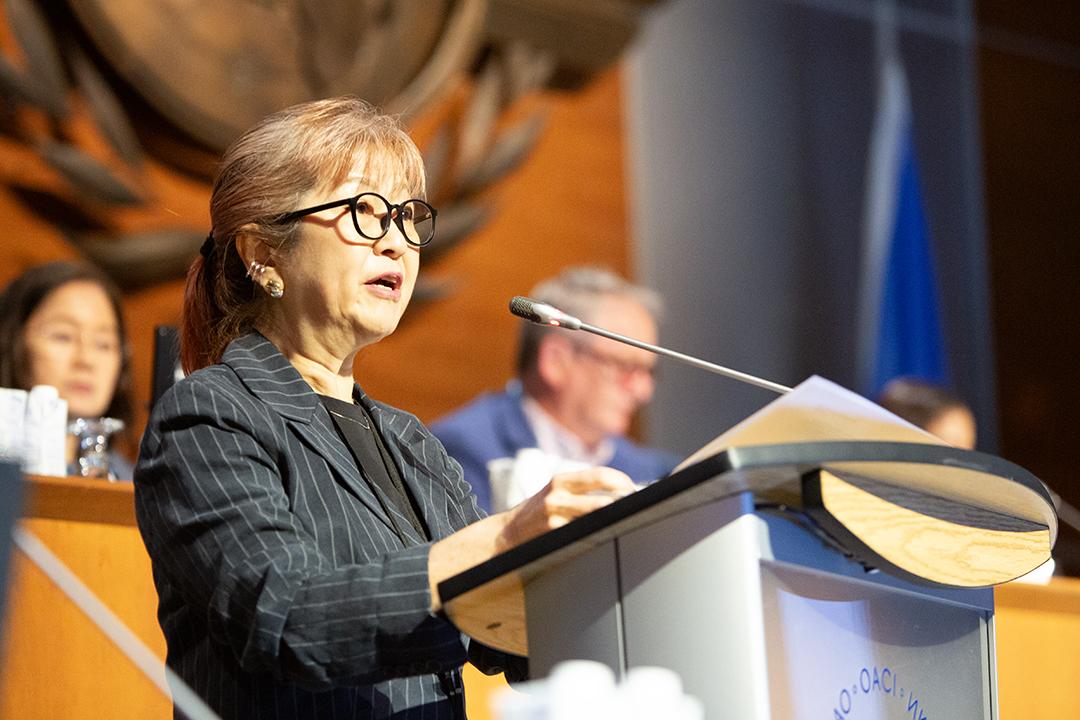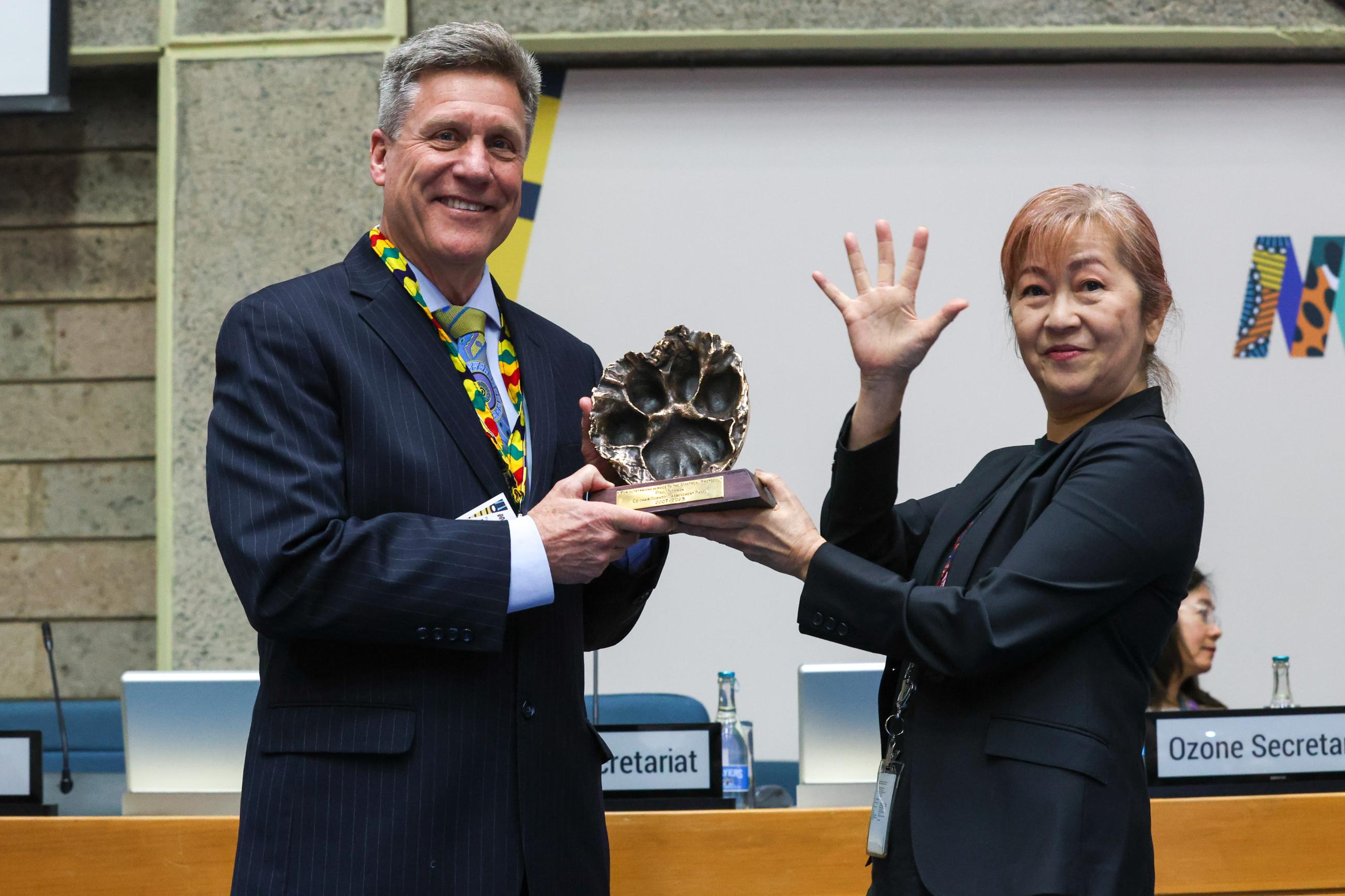Montreal Protocol on Substances that Deplete the Ozone Layer
17 October 2024
When scientists discovered a hole in the ozone layer over Antarctica in 1985, the world was struck with fear. Reaction was swift. Public health experts immediately warned that rising intensity of ultraviolet (UV) radiation may greatly increase the incidence of skin cancer and cataracts as well as significantly damage global crops and the marine food chain.
Scientists became aware that manmade chemicals could be destroying the ozone layer in the early 1970s and began calling for action even before the Antarctic ozone hole captured global attention. The United Nations Environment Programme (UNEP) initially responded by calling for further research and later for the negotiation of an international treaty. In fact, the resulting 1985 Vienna Convention for the Protection of the Ozone Layer and the 1987 Montreal Protocol on Substances that Deplete the Ozone Layer are often seen as the most effective environmental treaties in the world, having slowed down and started to reverse ozone depletion. Furthermore, the Montreal Protocol has become part of the global response to climate change by addressing potent greenhouse gases.

The protection of the ozone layer is one of multilateralism’s great success stories. But as parties to the Vienna Convention and the Montreal Protocol gather in Bangkok in late October 2024, they still have their work cut out for them to address the continuing threats to the Earth’s ozone layer and climate system.
Why is the ozone layer important?
Ozone is a pungent, slightly bluish gas composed of three oxygen atoms (O3). Nearly 90% of naturally occurring ozone resides in the stratosphere, the portion of the atmosphere ten to fifty kilometers (six to thirty miles) above the Earth. By absorbing the most dangerous UV-B radiation in the stratosphere, the ozone layer prevents harmful levels of this radiation from reaching Earth’s surface.
Increased exposure to UV radiation can cause skin cancer, cataracts, and weakened immune systems in humans. It can damage aquatic food chains, and cause direct damage to crustaceans and fish eggs, threatening fisheries and other aquatic resources that contribute to the global food supply. Furthermore, even a 10% reduction in stratospheric ozone could reduce plant production by about 6%, reducing global crop production. Ozone depletion also threatens plants, animals and microbes that provide important ecosystem services that the planet relies on for clean air and clean water, and the absorption of carbon dioxide.
Concern about ozone depletion
Created in the 1920s to replace flammable and noxious refrigerants, chlorofluorocarbons (CFCs) are inert, nonflammable, nontoxic, colorless, and odorless chemicals that are adaptable to a wide variety of uses. By the mid-1970s, CFCs had become the chemical of choice for coolants in air-conditioning and refrigeration systems, propellants in aerosol sprays, solvents in the cleaning of electronic components, and the blowing agent for the manufacture of flexible and rigid foam.
In 1974, scientists Mario Molina and F. Sherwood Rowland published a report showcasing their research suggesting that long-lived organic halogen compounds, such as CFCs, could reach the stratosphere where they would be dissociated by UV light, releasing chlorine atoms. These chlorine atoms would then act as a catalyst in the destruction of ozone molecules. Furthermore, they found CFCs can live for decades in the stratosphere. In fact, according to the US Environmental Protection Agency, one chlorine molecule can destroy over 100,000 ozone molecules before it is removed from the stratosphere.

“The years following the publication of our paper were hectic,” said Molina, “as we had decided to communicate the CFC–ozone issue not only to other scientists, but also to policy makers and to the news media; we realized this was the only way to ensure that society would take some measures to alleviate the problem.”
Molina and Rowland’s research, which was awarded the 1995 Nobel Prize in Chemistry—along with the confirmation of an ozone hole above the Antarctic by British scientists Joseph Farman, Brian Gardiner and Jonathan Shanklin in 1985—catalyzed the international community to coordinate an effective response to this shared crisis.
In 1975, the World Meteorological Organization (WMO) issued a scientific statement warning of the danger to the ozone layer and set the stage for an intergovernmental response. In 1976, UNEP called for "an examination of the need and justification for recommending any national and international controls over the release of man-made chemicals". UNEP and WMO convened an expert meeting in early 1977 in Washington, DC. WMO distributed an 80-page "Survey of the state of knowledge of the ozone layer" with a series of scientific and monitoring proposals. UNEP laid the foundation for international action. The resulting World Plan of Action on the Ozone Layer called for intensive international research and monitoring of the ozone layer.
What are the Vienna Convention and the Montreal Protocol?
The UNEP Governing Council set the political process in action in 1981 by adopting a decision to draft a global framework convention on stratospheric ozone protection. This ultimately led to the adoption of the Vienna Convention for the Protection of the Ozone Layer in 1985.
The Vienna Convention was a dramatic step forward. Often called a “framework convention” because it serves as a framework for efforts to protect the Earth's ozone layer, it focused on research, cooperation and monitoring. However, spurred on by the discovery of the Antarctic ozone hole, just two years later in 1987, the Montreal Protocol on Substances that Deplete the Ozone Layer was adopted and included control measures for certain CFCs and halons, a class of chemicals commonly used as fire extinguishing agents.
The Montreal Protocol mandated that industrialized countries freeze and then reduce by 50% their production and use of the five most widely used CFCs by the year 2000. Production of three key halons would be frozen on the same terms. Developing countries were given ten extra years to meet each obligation, allowing them to increase their use of these chemicals before taking on commitments. This grace period was necessary to get developing countries on board, especially since they argued they deserved access to these important chemicals for their economic development and that industrialized countries had emitted almost all of the CFCs in the atmosphere to that point.

This grace period reflects the principle of common but differentiated responsibilities, which has since become a mainstay of global environmental politics. The principle states that all countries have a common responsibility to address global environmental issues but that some countries have the responsibility to act first or enact more measures because of their contribution to the problem or their access to greater financial and technological resources to address it.
The Protocol also included provisions establishing scientific and technological assessment panels to provide parties with independent and authoritative information, requiring parties to report on their ozone depleting substance (ODS) production and use, banning trade in CFCs and halons with countries that did not ratify the agreement, creating provisions for reviewing the effectiveness of the regime, and strengthening controls through amendments and adjustments by a decision of the Meeting of the Parties (MOP).
The Vienna Convention and the Montreal Protocol have 198 parties, representing universal ratification.

The MOP’s decisions have always been taken based on sound science. The Protocol has three assessment panels—the Technology and Economic Assessment Panel, the Scientific Assessment Panel, and the Environmental Effects Assessment Panel—which provide the necessary expertise to investigate and review the latest scientific developments. Moreover, the Montreal Protocol was crafted so that if scientific evidence shows further action is needed, adjustments and amendments can be made.
This option has been used to great effect with the adoption of the London, Copenhagen, Montreal, Beijing, and Kigali Amendments. Each amendment strengthened control measures under the Protocol. The 1990 London Amendment and Adjustment required that parties completely phase out the production and use of the original eight CFCs and halons, as well as carbon tetrachloride and all other CFCs and halons by the year 2000 and methyl chloroform by 2005. In 1992, the Copenhagen Amendment accelerated the existing phase-out schedules; added controls on methyl bromide, a toxic fumigant used in agriculture and once the second most widely used insecticide in the world; and agreed to phase out hydrochlorofluorocarbons (HCFCs), used in refrigeration, by 2030.
The 1997 Montreal Amendment included the phaseout of HCFCs in developing countries, as well as the phaseout of methyl bromide in developed and developing countries in 2005 and 2015, respectively. The 1999 Beijing Amendment included tightened controls on the production and trade of HCFCs. Bromochloromethane was also added to the list of controlled substances with phaseout targeted for 2004.
The establishment of the Multilateral Fund for the Implementation of the Montreal Protocol in 1991 was an early milestone. This dedicated, stand-alone Fund provides financial and technical assistance to developing country parties to help them comply with the control measures of the Protocol. Since its inception, the Multilateral Fund has supported over 8,600 projects including industrial conversion, technical assistance, training and capacity building worth over USD 3.9 billion.
There are several elements that have contributed to the Montreal Protocol’s success, including the partnerships between governments, industry, non-governmental organizations (NGOs), and academia. Another key to success has been the development and availability of alternatives to ODS. If there were no alternatives, the Protocol wouldn’t have worked. But the Protocol has provided a stable framework for industry to plan their research and innovation and ensure a smooth transition to these alternatives.
Climate and ozone
From the outset, the ozone regime has played a large role in combatting both climate change and ozone depletion. While CFCs and HCFCs have been best known for their ozone-depleting potential, they also have a significant global warming potential and contribute to climate change. The Protocol has therefore had significant climate co-benefits: by phasing out these substances, greenhouse gas emissions have also decreased.
These climate co-benefits have been enhanced through the adoption and entry into force of the 2016 Kigali Amendment. The amendment calls for a gradual reduction in the consumption and production of hydrofluorocarbons (HFCs), which are potent greenhouse gases. HFCs are used primarily in air-conditioning systems, where they replaced HCFCs. Initially, HFCs were welcomed because of their low ozone-depleting potential, and they seemed to make a good substitute for HCFCs. But parties did not take their impact on the climate into account. Global implementation of the Kigali Amendment could avoid as much as half a degree Celsius of warming by the end of the century.
What’s next?
Despite the success of the Montreal Protocol thus far, there is still more work to be done. Although most ODS are either phased out or on their way to being phased out, the Montreal Protocol still allows some quantities of ODS to be produced and used for certain applications through essential use exemptions. Cost-effective alternatives to these applications need to be developed.
Although the development of environmentally friendly alternatives is promising, the use of HFCs continues in response to higher global temperatures, which triggers the need for enhanced cooling solutions. The Montreal Protocol needs to address this issue, walking the delicate line of limiting HFC emissions while also catering to the immediate needs of countries that endure extremely high temperatures.
Finally, large quantities of ODS can still be found in old equipment such as refrigeration systems and air conditioners. These chemicals will be released into the atmosphere if not properly reclaimed and destroyed. The Protocol will also need to keep under review those essential measures enabling the safe recovery of remaining ODS.
When delegates convene in Bangkok for the combined thirteenth meeting of the Conference of the Parties to the Vienna Convention (COP13) and the thirty-sixth Meeting of the Parties to the Montreal Protocol (MOP36) on 28 October 2024 they will address these issues as they seek to finetune the balance between advancing the Protocol’s implementation and enhancing the protection of both the ozone layer and the climate.
Prior to the meeting, a workshop on life-cycle refrigerant management will be held on 27 October 2024. Life-cycle refrigerant management refers to the leakage prevention, recovery, recycling, reclamation and destruction of refrigerants that contain ODS. The workshop aims to provide policymakers and practitioners insights into existing and emerging technologies, best practices and policy frameworks, including capacity-building and financing options, necessary for fast and effective implementation of life-cycle refrigerant management. It is expected that the MOP will discuss and take a decision on the way forward.
Parties are also expected to address a number of issues aimed at strengthening the Montreal Protocol and addressing emerging issues that could threaten the health of the ozone layer and the climate. Among these are how parties will fund atmospheric monitoring sites to better monitor emissions of controlled substances, how to manage remaining emissions of controlled substances, and how to address uncertainties about ODS not controlled by the Protocol.
They will also address illegal trade in ODS, dumping of energy inefficient products and equipment in developing countries, and enhancing energy efficiency in the cooling sector while implementing the Kigali Amendment. Parties will further discuss draft decisions on feedstock uses of controlled substances, and measures to support the sustainable management of recovered, recycled or reclaimed halons.
Metered-dose inhalers for asthma and other respiratory diseases have long been on the Montreal Protocol agenda because they used CFC propellants. The CFCs were replaced by HFCs, but these chemicals are now controlled under the Kigali Amendment. So, delegates will discuss if and when to operationalize measures to facilitate the transition to metered-dose inhalers with low-global-warming potential propellants.
The COP/MOP also needs to address the threat of new substances that may have ozone-depleting potential. The 2022 quadrennial assessment report of the Protocol’s Scientific Assessment Panel indicates that chlorine emissions from very short-lived substances not controlled by the Montreal Protocol, in particular from dichloromethane (a solvent that is widely used in adhesives, paint and coating products, pharmaceuticals, metal cleaning, chemical processing, and aerosols), continue to increase and have the potential to lead to more ozone depletion. Very short-lived substances are also linked to production of polyvinyl chloride (PVC) and some governments are concerned that regulation could have significant impacts on the economy.
The wide range of issues to be considered by COP13/MOP36 point to the fact that even the most successful multilateral environmental agreement will always face implementation challenges, new technologies, new substances, and threats due to illegal trade. While there is expected to be a robust debate on these and other issues, the end goal remains the same: ensuring the effectiveness of the Convention and the Protocol for the continued health of the ozone layer, people and planet.
Pamela Chasek, Ph.D., is the Co-founder and Executive Editor of the Earth Negotiations Bulletin.
